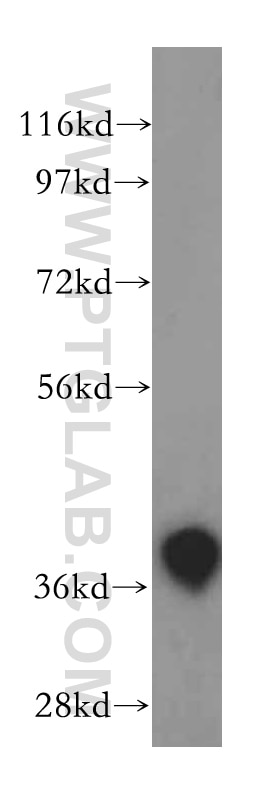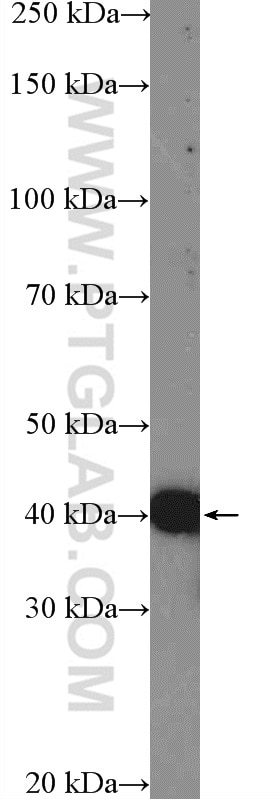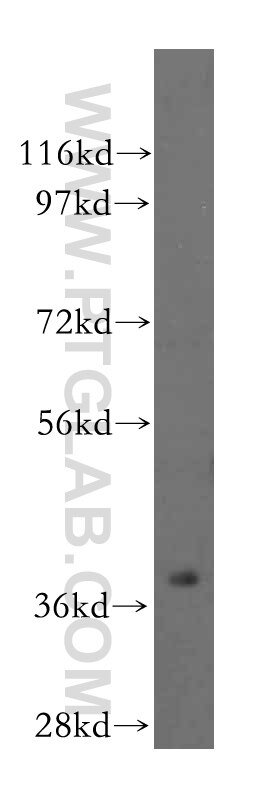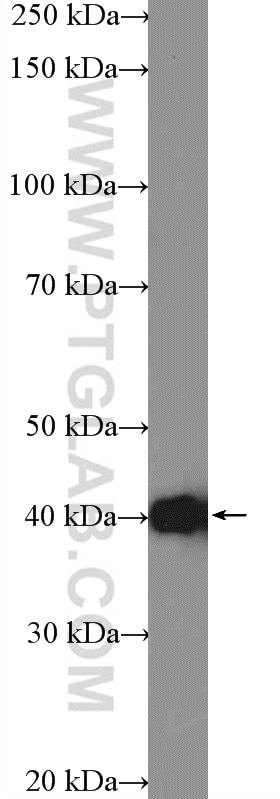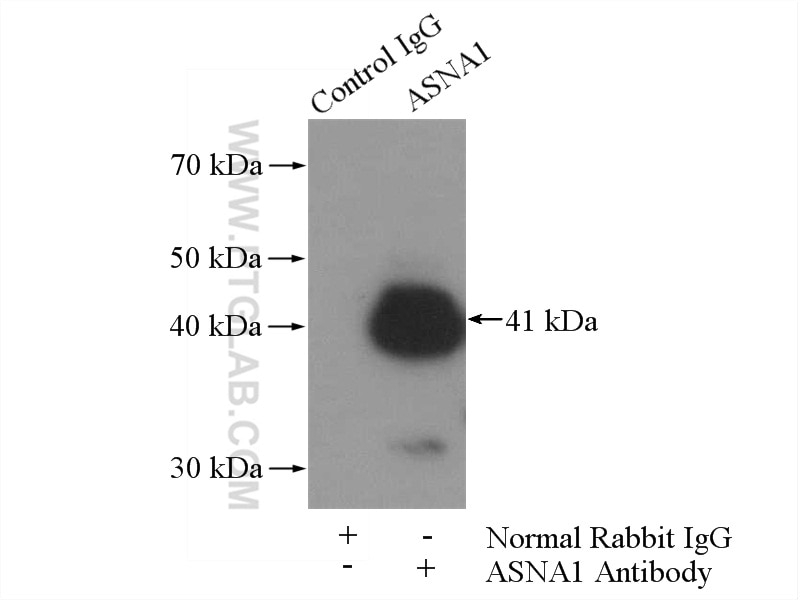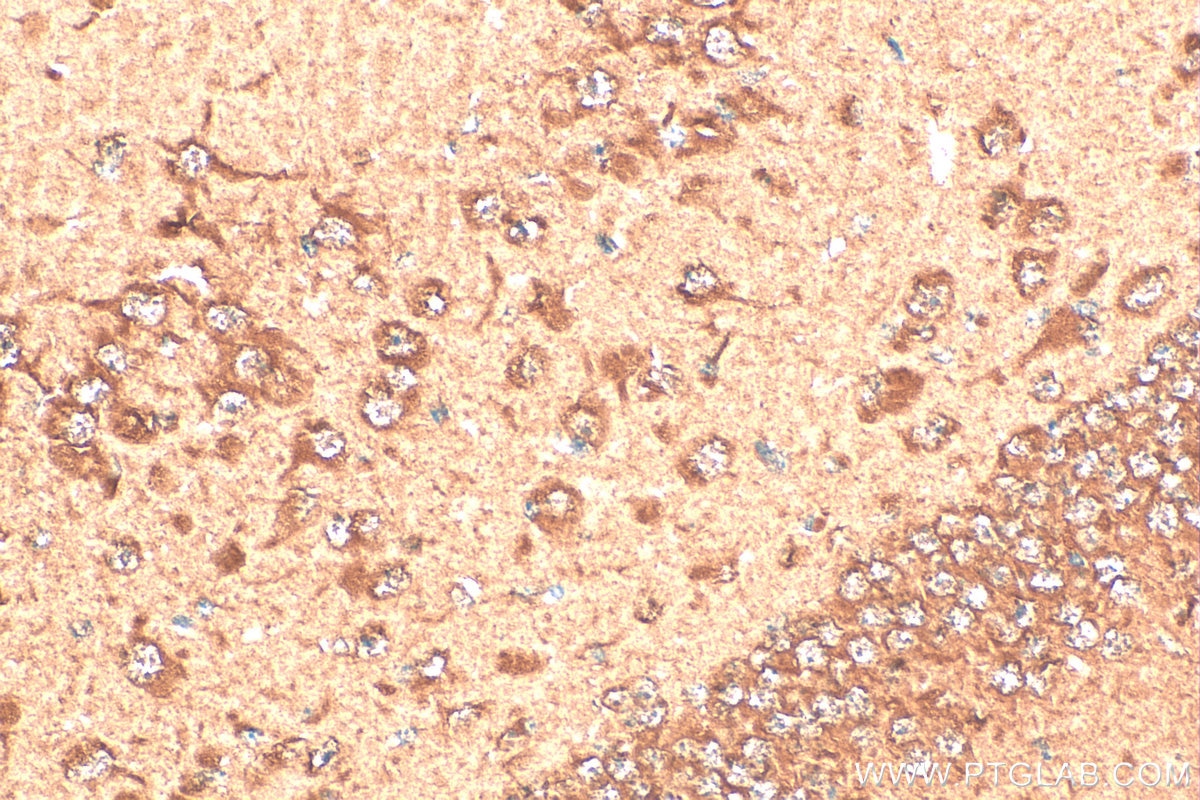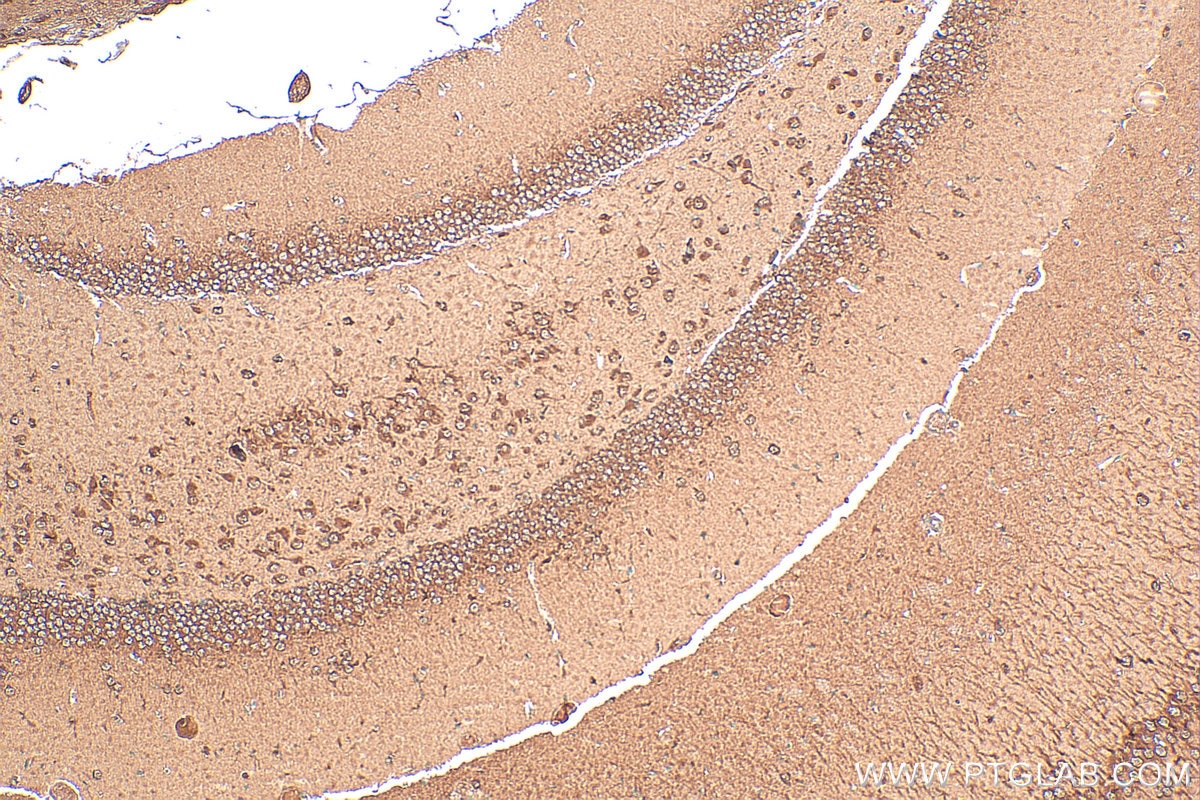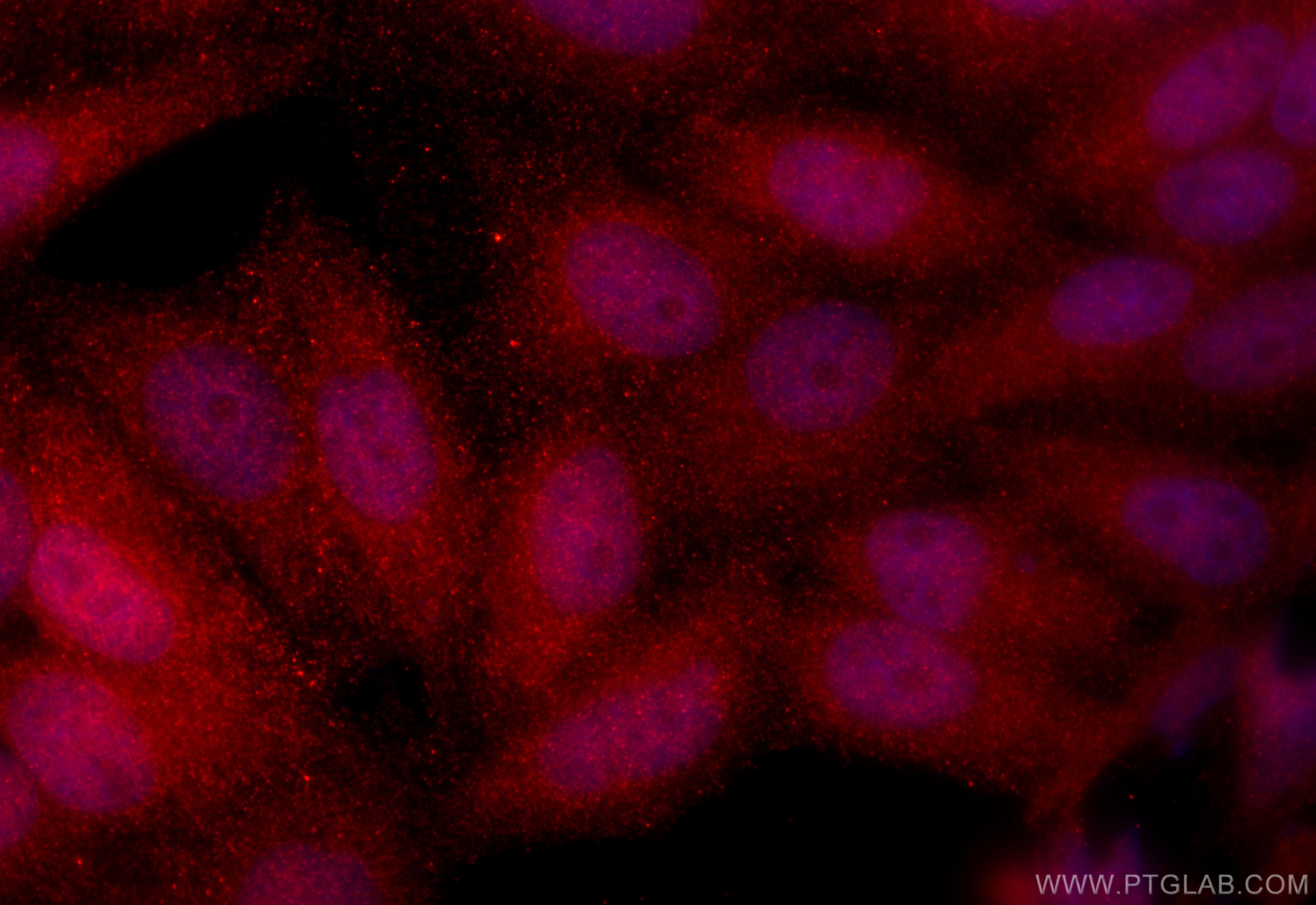- Phare
- Validé par KD/KO
Anticorps Polyclonal de lapin anti-ASNA1
ASNA1 Polyclonal Antibody for WB, IHC, IF/ICC, IP, ELISA
Hôte / Isotype
Lapin / IgG
Réactivité testée
Humain, rat, souris
Applications
WB, IHC, IF/ICC, IP, ELISA
Conjugaison
Non conjugué
N° de cat : 15450-1-AP
Synonymes
Galerie de données de validation
Applications testées
| Résultats positifs en WB | tissu cérébral humain, cellules HeLa, tissu cardiaque humain, tissu cérébral de souris |
| Résultats positifs en IP | tissu cérébral de souris |
| Résultats positifs en IHC | tissu cérébral de souris, il est suggéré de démasquer l'antigène avec un tampon de TE buffer pH 9.0; (*) À défaut, 'le démasquage de l'antigène peut être 'effectué avec un tampon citrate pH 6,0. |
| Résultats positifs en IF/ICC | cellules HepG2, |
Dilution recommandée
| Application | Dilution |
|---|---|
| Western Blot (WB) | WB : 1:500-1:1000 |
| Immunoprécipitation (IP) | IP : 0.5-4.0 ug for 1.0-3.0 mg of total protein lysate |
| Immunohistochimie (IHC) | IHC : 1:50-1:500 |
| Immunofluorescence (IF)/ICC | IF/ICC : 1:200-1:800 |
| It is recommended that this reagent should be titrated in each testing system to obtain optimal results. | |
| Sample-dependent, check data in validation data gallery | |
Applications publiées
| KD/KO | See 3 publications below |
| WB | See 7 publications below |
Informations sur le produit
15450-1-AP cible ASNA1 dans les applications de WB, IHC, IF/ICC, IP, ELISA et montre une réactivité avec des échantillons Humain, rat, souris
| Réactivité | Humain, rat, souris |
| Réactivité citée | Humain |
| Hôte / Isotype | Lapin / IgG |
| Clonalité | Polyclonal |
| Type | Anticorps |
| Immunogène | ASNA1 Protéine recombinante Ag7713 |
| Nom complet | arsA arsenite transporter, ATP-binding, homolog 1 (bacterial) |
| Masse moléculaire calculée | 38.7 kDa |
| Poids moléculaire observé | 37-41 kDa |
| Numéro d’acquisition GenBank | BC002651 |
| Symbole du gène | ASNA1 |
| Identification du gène (NCBI) | 439 |
| Conjugaison | Non conjugué |
| Forme | Liquide |
| Méthode de purification | Purification par affinité contre l'antigène |
| Tampon de stockage | PBS with 0.02% sodium azide and 50% glycerol |
| Conditions de stockage | Stocker à -20°C. Stable pendant un an après l'expédition. L'aliquotage n'est pas nécessaire pour le stockage à -20oC Les 20ul contiennent 0,1% de BSA. |
Informations générales
ASNA1 (also known as TRC40) is a highly conserved ATPase involved in efflux of arsenite and antimonite. Reduced ASNA1 expression is associated with significant inhibition of cell growth, increased apoptosis and increased sensitivity to DDP and arsenite.Thus ASNA1 is proposed to be a target to overcome resistance to cancer chemotherapy. In addition, ASNA1 has been identified as an ER targeting factor for tail-anchored proteins in the posttranslational membrane insertion pathway.
Protocole
| Product Specific Protocols | |
|---|---|
| WB protocol for ASNA1 antibody 15450-1-AP | Download protocol |
| IHC protocol for ASNA1 antibody 15450-1-AP | Download protocol |
| IF protocol for ASNA1 antibody 15450-1-AP | Download protocol |
| IP protocol for ASNA1 antibody 15450-1-AP | Download protocol |
| Standard Protocols | |
|---|---|
| Click here to view our Standard Protocols |
Publications
| Species | Application | Title |
|---|---|---|
Mol Cell Molecular machinery for insertion of tail-anchored membrane proteins into the endoplasmic reticulum membrane in mammalian cells. | ||
J Cell Sci Emery-Dreifuss muscular dystrophy mutations impair TRC40-mediated targeting of emerin to the inner nuclear membrane.
| ||
J Cell Sci An alternative membrane topology permits lipid droplet localization of peroxisomal fatty acyl-CoA reductase 1.
| ||
J Biol Chem ER entry pathway and glycosylation of GPI-anchored proteins are determined by N-terminal signal sequence and C-terminal GPI-attachment sequence | ||
FEBS Lett Human SND2 mediates ER targeting of GPI-anchored proteins with low hydrophobic GPI attachment signals. |
